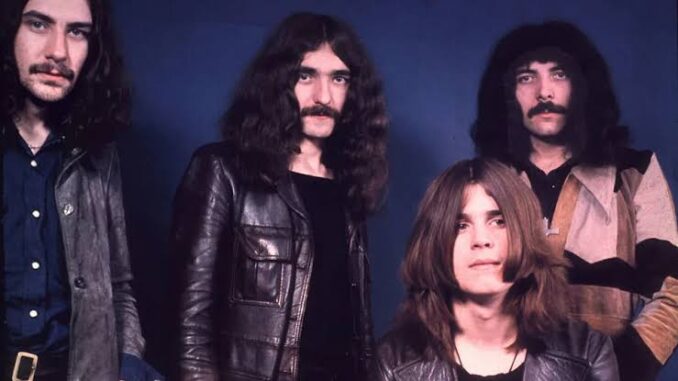
When it comes to iconic heavy metal songs, few tracks have the staying power of Black Sabbath’s 1970 classic Iron Man. From its lumbering, instantly recognizable riff to Ozzy Osbourne’s haunting vocal delivery, the song has become a staple in the genre’s DNA. But beyond the raw power and dark atmosphere lies a fascinating layer of music theory that explains why Iron Man hits listeners so hard. Recently, Dr. Anthony Reid, a professor of music theory and popular music studies, dissected the track in his university seminar, offering insight into why Tony Iommi’s creation remains timeless.
The famous riff – simplicity with intent
Dr. Reid began his analysis by addressing the song’s legendary guitar riff. Written in the key of B minor, the opening sequence moves through a slow, descending chromatic line, giving it a heavy, foreboding quality. “What makes it so effective,” Reid explained, “is that it’s not technically complex, but it’s harmonically loaded with tension. The use of half-step motion—moving between notes that are just one fret apart—creates a grinding sense of inevitability.”
This is reinforced by Iommi’s preference for power chords, which strip harmony down to its rawest form: the root note and fifth. Without a third, the chord remains neither major nor minor, allowing the guitar tone and rhythm to dictate the emotional impact. “It’s primal,” Reid noted, “and that’s why it speaks to so many people, whether they understand the theory or not.”
Tempo and rhythmic weight
Unlike many rock songs of its era, Iron Man embraces a slow tempo—around 80 beats per minute. This pace gives each chord and drum hit a crushing weight, like the footsteps of the song’s titular mechanical figure. Drummer Bill Ward’s steady, no-frills beat complements the riff perfectly, leaving space for the guitar to dominate the sonic landscape. “The slowness is a deliberate artistic choice,” Reid pointed out. “It’s cinematic. It feels like the soundtrack to a giant machine lumbering toward you.”
Vocals and melody
Ozzy Osbourne’s vocal approach in Iron Man also drew the professor’s attention. The melody is sparse and largely syllabic, sticking close to a few central notes. This creates a chant-like quality that feels hypnotic and ominous. “Ozzy doesn’t so much sing Iron Man as he inhabits it,” Reid said. “His delivery is almost monotone in places, which adds to the mechanical, detached vibe.”
The opening line—filtered through a distorted, robotic effect—sets the narrative tone before the song even begins properly. It’s an early example of vocal processing used for storytelling in rock music.
Dynamics and arrangement
One of the most compelling aspects of Iron Man is its dynamic structure. The song shifts between the heavy main riff, quieter verses, and short bursts of guitar fills. These contrasts keep the listener engaged despite the slow tempo. “Iommi’s solos,” Reid explained, “use blues-based phrasing but with a darker modal twist, often leaning into the natural minor scale. It’s a perfect blend of rock tradition and heavy metal innovation.”
Why it endures
From a theoretical standpoint, Iron Man is a masterclass in minimalism serving maximum impact. Every element—key, tempo, chord choice, and arrangement—is tailored to evoke a singular, monolithic mood. “It’s proof,” Reid concluded, “that music theory isn’t about complexity for complexity’s sake. It’s about making deliberate choices that serve the song’s emotional core. And in that sense, Iron Man is perfect.”
More than 50 years after its release, the song still resonates with new generations, not because it’s flashy, but because it’s unforgettable—and now, thanks to a professor’s keen ear, we know exactly why
Be the first to comment